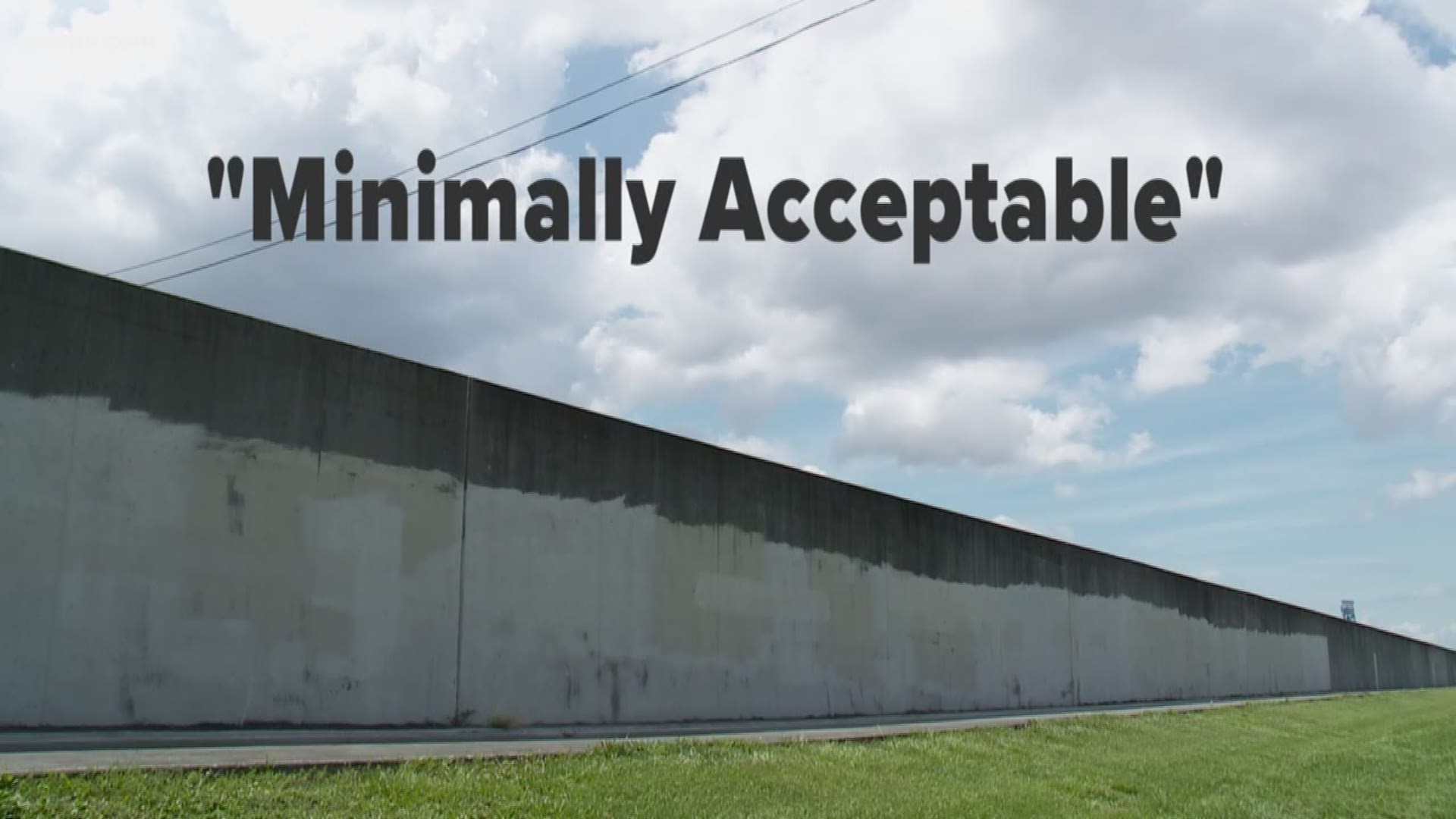NEW ORLEANS - Structures too close to floodwalls. Ruts in earthen levees. Erosion and overgrowing vegetation.
Those are the most common problems that earned New Orleans’ federal flood protection system a grade of “minimally acceptable” from the U.S. Army Corps of Engineers.
But the “minimally acceptable” grade may not be as dire as it sounds. The Corps’ inspection scoring system is so tough that if even one of the nearly 3,000 items reviewed by inspectors has a minor deficiency, the whole system is ranked “minimally acceptable.”
The deficiencies in the New Orleans flood protection system are numerous, however. The most recent inspections reports released by the Corps indicate that 911 items, almost a third of all pieces of the system observed by inspectors, had non-critical problems. Another 21 items had more significant, “unacceptable,” problems.
“Most of the levees we inspect get minimally acceptable,” said Col. Michael Clancy, the Corps’ New Orleans District commander, told WWL-TV earlier this month. “That might not sound good, but it just means something needs to be fixed or improved. Could be as simple as rutting; could be a serious problem.”
The Corps’ 2014 levee inspection reports for the New Orleans West Bank and East Bank systems list deficiencies ranging from large ditches and ponding on levees to damage from rooting hogs. Summaries of those reporters were posted online earlier this month.
The reports paint a picture of the maintenance problems along the combined 204 miles of earthen levees and floodwalls in the East Bank and West Bank systems, the two largest in the area. But none of those issues would prevent the systems from performing as intended during flooding events, according to the Corps.
Most of the problems rated “unacceptable” are related to rutting and depressions on the earthen levees. These ditches can puddle with water, preventing access for workers and reducing soil capacity to absorb water and grow healthy grass, according to the report.
Other issues include rotting timber supports under pipes, warped metal gates that don’t close properly and random debris blocking access to floodwalls. These problems were rated “unacceptable” either because they could prevent a segment of the system from functioning correctly, or because they were previously rated as “minimally acceptable” but were not corrected within two years.
The report summaries were made public this month through the Corps’ online National Levee Database after the watchdog group Levees.org complained about a lack of information about the inspections.
Following a WWL-TV report and a letter from Levees.org to the Southeast Louisiana Flood Protection Authority – East, the Corps added its 2014 inspection summaries for the New Orleans East Bank and West Bank levee systems to the database.
“That's a national effort initiated post-Katrina to inform the public nationwide about their risk if you live behind a levee,” Clancy said.
The National Levee Database features more recent inspection results from 2017, also ranked “minimally acceptable.” However, these ratings do not include details or summaries of the inspections for any of the eight systems that touch Orleans Parish.
The inspection reports have recommendations for repairing levee embankments and floodwalls.

